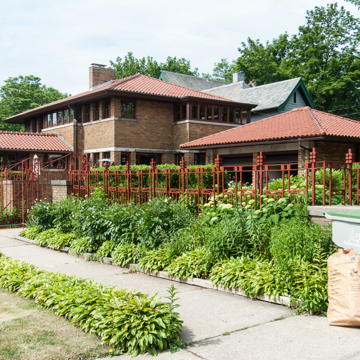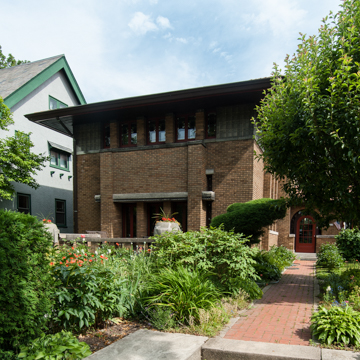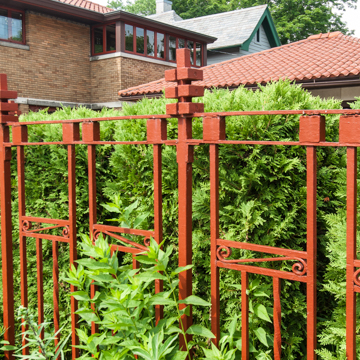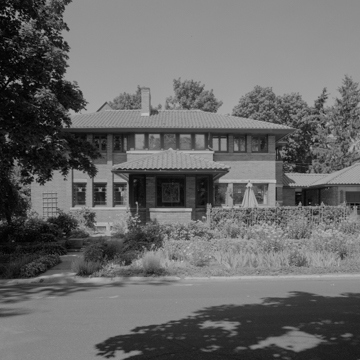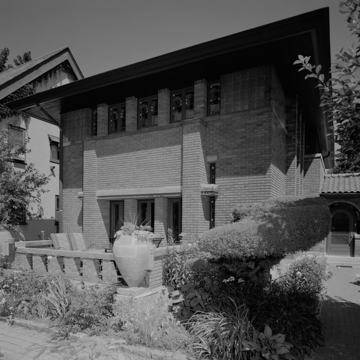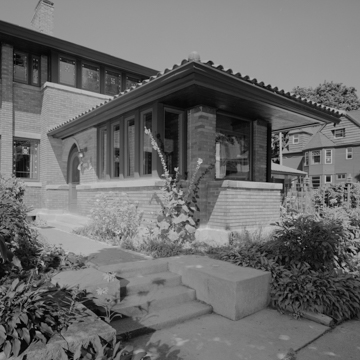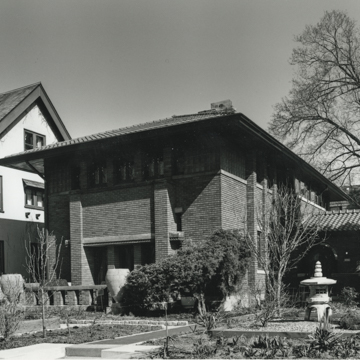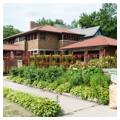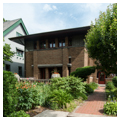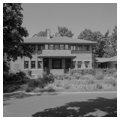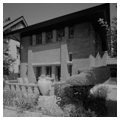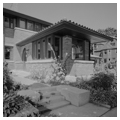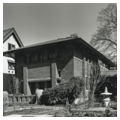Williamson had worked in the office of Frank Lloyd Wright, and this house is one of Milwaukee’s most outstanding Prairie School examples. It borrows substantially from Wright’s Bogk House (MI161), the construction of which Williamson oversaw, and thus unsurprisingly is often mistaken for one of Wright’s works. Built for physician Thomas Robinson Bours, the two-story, rectangular brick house has such Prairie Style hallmarks as a low-pitched hipped roof, widely overhanging eaves, and abstract art-glass ribbon windows on the second story. The cast-concrete tiles cladding the second story rank among the most interesting examples of decorative work in the city. A one-story sunroom is on the Stowell Avenue side, and a rare original Prairie Style iron fence encloses the backyard. The Bours House is a late example of Prairie Style, which peaked between 1900 and 1915. Strongly associated with the Midwest, the style was mostly used in expensive residential projects.
You are here
Thomas Robinson Bours House
If SAH Archipedia has been useful to you, please consider supporting it.
SAH Archipedia tells the story of the United States through its buildings, landscapes, and cities. This freely available resource empowers the public with authoritative knowledge that deepens their understanding and appreciation of the built environment. But the Society of Architectural Historians, which created SAH Archipedia with University of Virginia Press, needs your support to maintain the high-caliber research, writing, photography, cartography, editing, design, and programming that make SAH Archipedia a trusted online resource available to all who value the history of place, heritage tourism, and learning.















